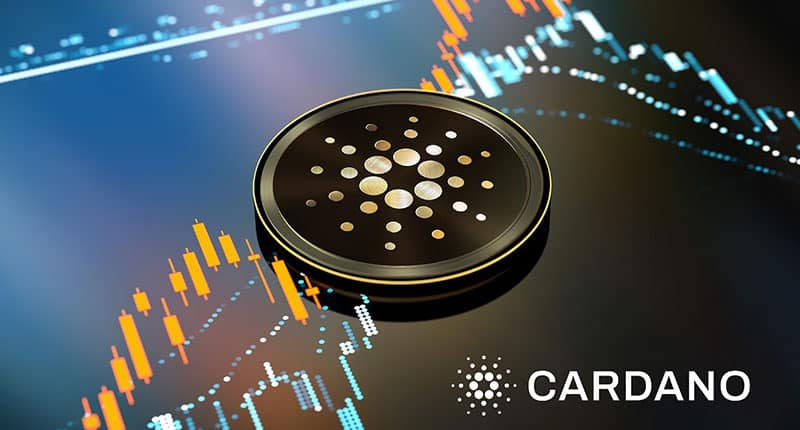Cardano Explained: A Beginner’s Guide
Cardano is a blockchain platform that aims to provide a secure and decentralized platform for building and deploying smart contracts and decentralized applications (dApps). It is often touted as a competitor to Ethereum, but it has several unique features that set it apart. This beginner’s guide will provide a comprehensive overview of what Cardano is, how it works, and why it matters.
Blockchain technology is one of the most significant technological innovations of the 21st century. It has the potential to revolutionize various industries, including finance, healthcare, and supply chain management. Cardano is one such blockchain platform that aims to provide a more secure, scalable, and sustainable platform for building decentralized applications. This article will provide a beginner’s guide to Cardano and its ecosystem.
What is Cardano?
Cardano is a third-generation blockchain platform that uses a proof-of-stake (PoS) consensus mechanism to validate transactions and generate new blocks. It was founded by Charles Hoskinson, who was also a co-founder of Ethereum. Cardano’s goal is to create a secure and decentralized platform for building and deploying smart contracts and dApps.
History of Cardano
Cardano’s development began in 2015, and it went live in September 2017. The project was led by IOHK (Input Output Hong Kong), a blockchain research and development company founded by Charles Hoskinson and Jeremy Wood. The project was funded through an initial coin offering (ICO), which raised over $60 million.
How does Cardano work?
Cardano is a multi-layered platform that uses a proof-of-stake (PoS) consensus mechanism to validate transactions and generate new blocks. It is composed of two layers: the Cardano Settlement Layer (CSL) and the Cardano Computational Layer (CCL). The CSL is responsible for handling the ADA cryptocurrency transactions, while the CCL is where smart contracts and dApps are executed.
Proof-of-Stake (PoS) Consensus Mechanism
Cardano uses a PoS consensus mechanism, where validators, also known as stake pool operators, are selected to validate transactions based on the amount of ADA they hold. This is different from the proof-of-work (PoW) consensus mechanism used by Bitcoin, where validators, also known as miners, are selected based on their computational power.
Layers of Cardano
Cardano is composed of two layers, the Cardano Settlement Layer (CSL), and the Cardano Computational Layer (CCL). The CSL is responsible for handling the ADA cryptocurrency transactions, while the CCL is where smart contracts and dApps are executed. This two-layered approach makes Cardano more modular and scalable than other blockchain platforms.
Understanding the Technology behind Injective Protocol: A Technical Overview
Features of Cardano
Cardano has several features that set it apart from other blockchain platforms. These include:
Scalability
Cardano is designed to be highly scalable, with the ability to process thousands of transactions per second. It achieves this through its layered architecture and the use of a PoS consensus mechanism.
Interoperability
Cardano is built to be interoperable with other blockchain platforms, making it possible for dApps to communicate with each other across different blockchain networks.
Sustainability
Cardano is designed to be a sustainable platform, with a focus on minimizing energy consumption and reducing the environmental impact of blockchain technology.
Cardano’s ADA Cryptocurrency
ADA is the native cryptocurrency of the Cardano platform. It is used to pay for transaction fees and to incentivize validators to participate in the PoS consensus mechanism.
Supply and Distribution
The total supply of ADA is capped at 45 billion, with 31 billion currently in circulation. The remaining ADA is reserved for future development and growth of the platform.
Staking Rewards
Validators who participate in the PoS consensus mechanism are rewarded with ADA for validating transactions and generating new blocks. The amount of ADA earned as a reward is proportional to the amount of ADA held by the validator.
Use Cases
ADA can be used for a variety of purposes, including:
- Payment for goods and services
- Investment in the cryptocurrency market
- Staking for passive income
- Governance of the Cardano platform
How to Buy and Store ADA
ADA can be bought and sold on a variety of cryptocurrency exchanges, including Binance, Coinbase, and Kraken. It can also be stored in a variety of cryptocurrency wallets, including the official Daedalus wallet and the Ledger Nano hardware wallet.
Cardano vs Ethereum
Cardano is often compared to Ethereum, as both platforms provide a secure and decentralized platform for building smart contracts and dApps. However, Cardano has several unique features that set it apart from Ethereum, including:
- Scalability: Cardano is designed to be highly scalable, with the ability to process thousands of transactions per second.
- Interoperability: Cardano is built to be interoperable with other blockchain platforms, making it possible for dApps to communicate with each other across different blockchain networks.
- Sustainability: Cardano is designed to be a sustainable platform, with a focus on minimizing energy consumption and reducing the environmental impact of blockchain technology.
Cardano’s Roadmap
Cardano has an ambitious roadmap for the future development of the platform. Some of the key milestones include:
- Launch of the Goguen era: This will bring smart contract functionality to the Cardano platform.
- Launch of the Basho era: This will focus on improving the scalability and interoperability of the Cardano platform.
- Launch of the Voltaire era: This will focus on the governance of the Cardano platform.
Adoption and Future of Cardano
Cardano has already gained significant adoption, with several dApps and projects already built on the platform. The future of Cardano looks bright, with continued development and innovation in the pipeline.
Conclusion
Cardano is a third-generation blockchain platform that aims to provide a secure and decentralized platform for building and deploying smart contracts and dApps. It is designed to be highly scalable, interoperable, and sustainable, with several unique features that set it apart from other blockchain platforms. As adoption of Cardano continues to grow, it has the potential to become one of the most significant blockchain platforms of the future.
FAQs
What is the difference between Cardano and Ethereum?
- While both Cardano and Ethereum provide a secure and decentralized platform for building smart contracts and dApps, Cardano has several unique features that set it apart from Ethereum, including its focus on scalability, interoperability, and sustainability.
How can I buy ADA cryptocurrency?
- ADA can be bought and sold on a variety of cryptocurrency exchanges, including Binance, Coinbase, and Kraken.
How can I store my ADA cryptocurrency?
- ADA can be stored in a variety of cryptocurrency wallets, including the official Daedalus wallet and the Ledger Nano hardware wallet.
What is Cardano’s roadmap for the future?
- Cardano has an ambitious roadmap for the future development of the platform, with key milestones including the launch of the Goguen, Basho, and Voltaire eras, each focusing on different aspects of the platform’s functionality and governance.



